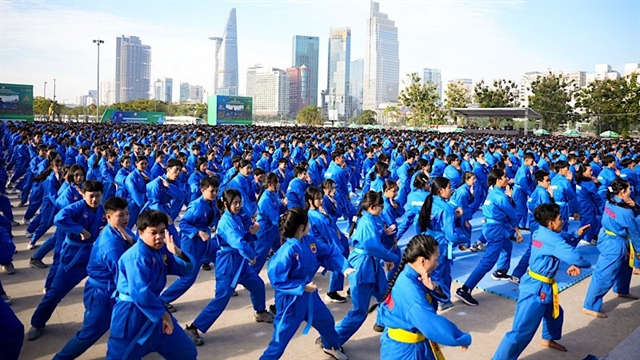 Society
Society

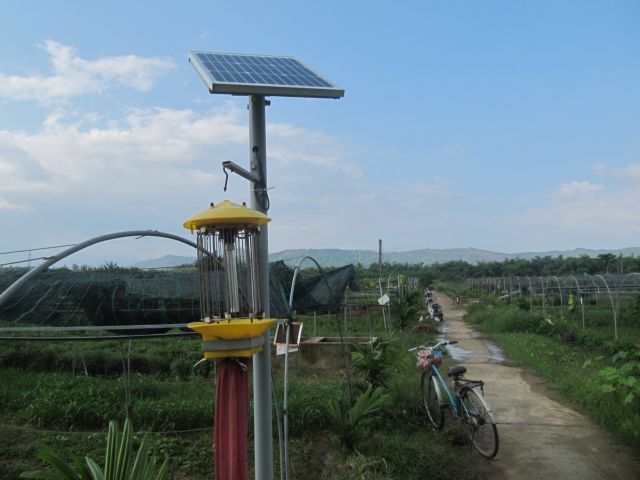
|
| A vegetable farm in Túy Loan Village in Đà Nẵng City is seen as a 'safe' zone during the COVID-19 pandemic. The agriculture-based village has recorded low coronavirus infection cases during the fourth wave of COVID-19. — VNS Photo Công Thành |
Công Thành
CENTRAL REGION — Isolated living environments, well-structured communities and food self-sufficiency have turned villages and islands in central Việt Nam into safe havens against the COVID-19 pandemic.
Just 40km from downtown Đà Nẵng City, the ethnic Cơ Tu communities in the Tà Lang and Giàn Bí villages in Hòa Bắc Commune have yet to record a positive case of COVID-19.
Head of Giàn Bí Village, Alăng Như, says most of the villagers make their living from farming, with only 20 per cent working at industrial parks.
He said the pandemic has been well controlled by the community since the two villages began applying social distancing orders per the city’s People’s Committee decision.
Only necessary trips to the city’s downtown have been permitted and every family must stay a safe distance apart.
“Although no COVID-19 infection has been found in the community, the Cơ Tu people are staying alert… People coming from the pandemic hotspots in the city’s downtown area were almost completely stopped from approaching the community or COVID-safe protection measures were taken at safe distance check-points,” Như said.
“Villages that relied on community-based tourism had also become very quiet with no tours organised since COVID-19 cases started increasing in recent weeks. As a result, many villagers resumed rice farming and raising livestock to supply food for the community,” he said.
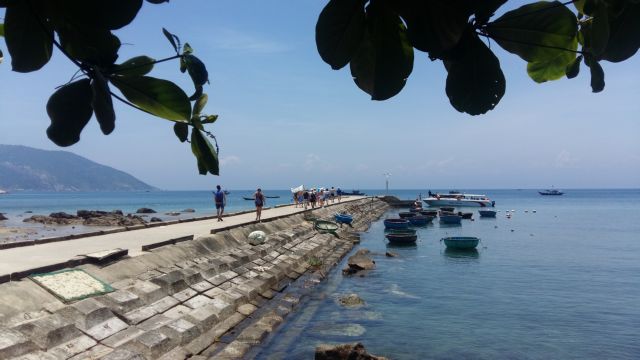
|
| Chàm Island, off the coast of Hội An, is well protected against the coronavirus. No infections have been reported in two years. VNS Photo Công Thành |
Như said villagers were aware of the danger of spreading infections in the community and any movement between the two villages and with the outside are done with extreme caution.
The Cơ Tu community head said only assigned shops were allowed to bring supplies into the village by people who had completed health declarations and were tested regularly.
He added that all families who have people working at factories in the city were given group tests frequently.
“We are not sure how long our community will be able to avoid coronavirus infections, but our community’s warning system will always remain on.”
Túy Loan Village, 30km from Đà Nẵng, which supplies vegetables to the city’s downtown area has also kept infection rates low. Only two cases have been found in the fourth outbreak in early July. They have been completely quarantined and all community tests were negative.
Nguyễn Quang Dũng, head of the village’s garden co-operative said the agriculture-centric village was almost shielded from travellers from urban areas as vegetables were inspected and transported by logistics companies.
He said anyone coming from urban areas is checked by pandemic control teams at checkpoints and an easy detection QR Code system on commodities and the transportation of goods is also in place.
Farming and craft communities in Cẩm Thanh commune in suburban Hội An ancient town, where social distancing orders began on July 31, have also remained safe zones, even when the city has been locked down.

|
| A Cơ Tu women weaves a traditional brocade in Giàn Bí village near Đà Nẵng City. The village has been isolated from the coronavirus since April 2020. VNS Photo Công Thành |
Võ Tấn Tân, owner of Bamboo Taboo workshop in Cẩm Thanh, said the isolation of the craft production village kept them a ‘safe’ distance from coronavirus risks.
Tân, who manages a workshop with five skilled craftsmen, said he has remained in business by utilising digital technology.
With tourism gone, local villagers have been surviving through fishing and handicrafts.
Tân explained that safe distance, protective measures, regular health care and frequent cleaning have helped limit coronavirus from spreading in the community.
Isolated islands
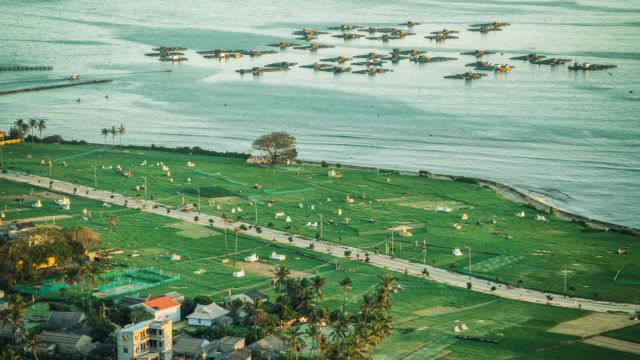
|
| Lý Sơn Islands, off the central province of Quảng Ngãi, is still a 'zero coronavirus' site. The island has yet to report a single infection. — Photo courtesy of Lê Xuân Thọ |
Chàm Islands, 20km off the coast of Hội An, a world biosphere reserve site and a favourite destination, is also a ‘low coronavirus risk site’
A pandemic control system has been rapidly developed to inspect every boat trip between Cửa Đại Port and the Islands’ main dock.
Chairwoman of the Islands’ People’s Committee, Phạm Thị Mỹ Hương said 10 close contacts of coronavirus cases have been safely isolated and tested at checkpoints.
“The islands are still safe at the moment. No infection source (F0) has yet been reported on the islands. Only boat trips for permitted business and logistics are allowed as all cruise tours have been shut down since early July,” Hương said.
“Only people who are already negative for COVID-19 with special permission are allowed to travel between the islands and the mainland. Community-based COVID-19 inspection teams are working very effectively and islanders have been on high alert,” she said, adding that frontline forces have all been vaccinated.
Coronavirus infection inspections have also been well controlled by Lý Sơn Island authorities, off the coast of Quảng Ngãi Province.
Health declarations and permission to travel have been scrutinized by border guard forces at Sa Kỳ Port in the mainland and the port at Lý Sơn Island since the province came under social distancing orders.
The 22,000 strong population of the islands were almost closed off to all boat trips for tourism services from May. Fishing vessels and fishermen were closely monitored by border guards.
Chairwoman of the Island’s People’s Committee, Phạm Thị Hương said all islanders returning from coronavirus hotspots were isolated on the mainland at mass quarantine centres.
She said any suspected cases related to possible infections were quickly reported by community-based pandemic response teams for rapid COVID-19 tests.
Hương said 100 COVID-19 frontline members had been fully vaccinated, while 600 others had received their first shots at the end of July.
People living on Lý Sơn Island, known as the Kingdom of Garlic in Việt Nam, (73 per cent of the population make their living from farming garlic) often use garlic oil and fresh garlic root as a traditional means of improving their health.
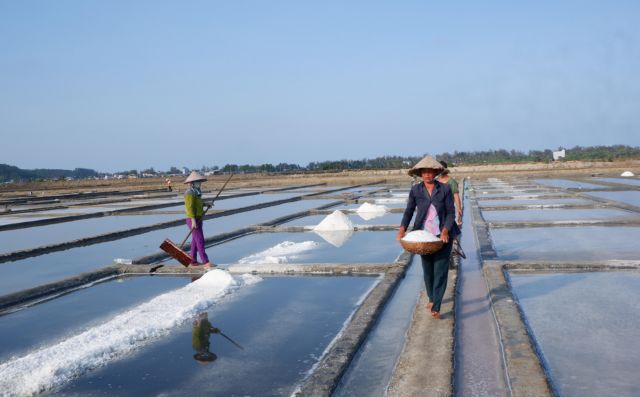
|
| Farmers work on Sa Huỳnh salt fields in Quảng Ngãi Province. The community is still safe from COVID-19 infections. — Photo courtesy of SAHU |
Hương said islanders feed their chickens and ducks leftover garlic to protect them from being infected with bird flu and other diseases.
Gò Cỏ village, an ancient village, off the national highway No 1, and Sa Huỳnh salt community in the coronavirus hit Phổ Thạnh ward of Quảng Ngãi Province, have are both seen as ‘safe zones’ with no infections since last year.
Local community authorities at the two villages said villagers have very little communication with outsiders which helps limit the possibility of infection. —VNS
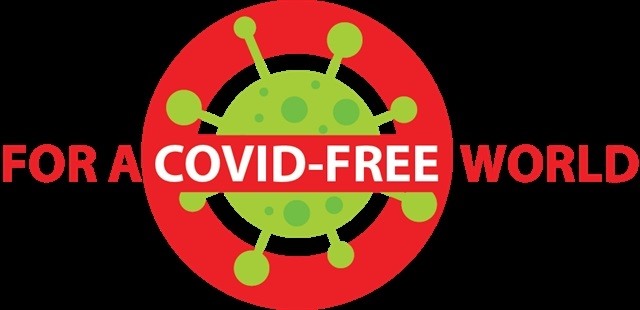
|

.jpg)
.jpg)
